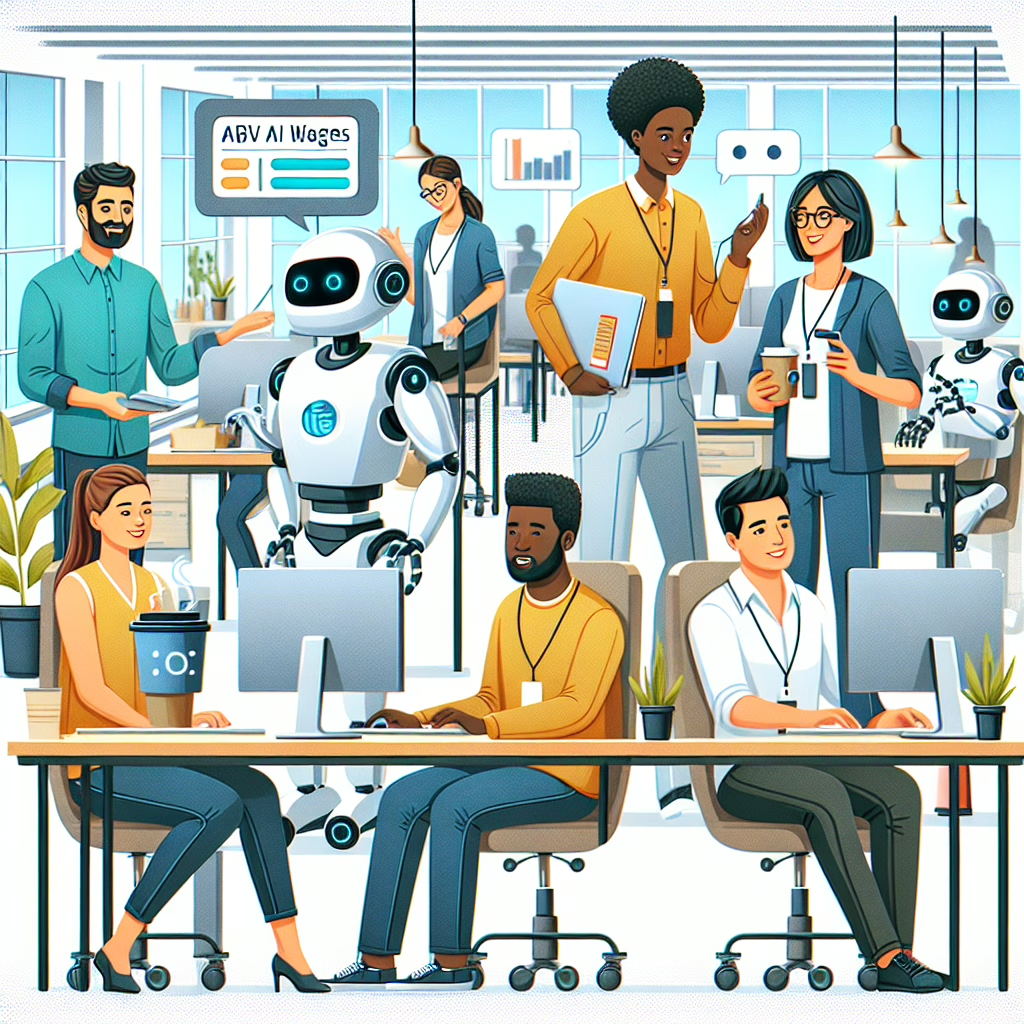In the whimsical world of technology, generative AI has become a hot topic, but what’s the real scoop? Is it gnawing away at wages, swapping out workers, or magically saving time? According to economists, the answer is a delightful mix of reality and misconception! So buckle up as we dive into the fascinating realm of generative AI and its impact on our work lives.
Generative AI: The New Office Buddy?
First off, let’s address the elephant in the room: many folks fear that generative AI will become our new office overlord, ready to replace us with its soulless algorithms. However, economists have waved their magic wands and revealed a different story! It turns out that while generative AI is transforming workflows, it’s not exactly slashing jobs or wages like a villain in a bad action movie.
In fact, generative AI appears to be more of an enthusiastic intern than a heartless job thief. By automating mundane tasks, it allows humans to focus on more creative and fulfilling aspects of their work. Imagine having an assistant who never takes coffee breaks but still knows how to brew up some innovation!
The Wages of AI: Not So Scary!
Now let’s talk about the wage aspect. Many skeptics believe that integrating generative AI into workplaces might lead to a salary massacre. However, research shows that this isn’t the case. Instead of slashing salaries left and right, generative AI can actually enhance productivity—think of it as a productivity booster shot!
As businesses adopt these technologies, they often experience a surge in output, which can lead to increased revenue. When revenues rise, companies may have more resources to share with their employees. So rather than fearing a paycheck plummet, consider this an opportunity for raises—or at least a slightly fancier coffee machine in the break room!
Time-Saving Technology: A Double-Edged Sword?
Ah, time-saving! Isn’t that what we all dream about? Well, generative AI does indeed promise to shave hours off tedious tasks. But here’s where things get cheeky—what happens when we save time? Do we simply sit back and relax? Or do we fill our newfound free hours with even more work?
The truth is that while generative AI can help streamline processes, it also raises questions about how we utilize that saved time. Instead of taking up knitting or starting a garden (both fantastic options!), many professionals find themselves diving headfirst into even bigger projects. So much for sipping piña coladas by the beach!
The Human Touch: Still Essential
Despite all these technological advances, one undeniable truth remains: nothing beats the human touch! Generative AI might be adept at generating reports and creating content, but it lacks that magical sprinkle of creativity and emotional intelligence that only humans possess.
This means that while generative AI can assist in many ways, it cannot fully replace the unique perspectives and insights that people bring to the table. So fear not; your job is likely safe from being automated into oblivion—at least until robots develop a taste for coffee and small talk!
Conclusion: Embrace the Future with Humor
In conclusion, as we navigate this exciting era of generative AI, let’s remember to embrace change with open arms—and maybe a chuckle or two! While technology continues to evolve and reshape our workplaces, it seems there’s no need for panic. Instead of seeing generative AI as a threat to our jobs or our wages, let’s view it as an intriguing tool designed to help us thrive.
So what do you think? Are you ready to welcome your new digital assistant with open arms? Or do you still have your doubts? Share your thoughts in the comments below!
Special thanks to TechRadar for their insightful article that inspired this piece!
The Future of Work: More Collaboration
As we venture deeper into this new age, many are questioning how generative AI will reshape collaboration in workplaces. Far from replacing human input, these tools can enhance teamwork by handling repetitive tasks while employees engage in collaborative efforts. Teams can focus on strategic planning, creativity, and innovation—areas where human intellect truly shines.
Adapting to Change: The Role of Upskilling
To truly benefit from generative AI, employees will need to adapt to these new tools. Upskilling and continuous learning will become essential. Organizations that encourage lifelong learning can help their workforce stay relevant in a tech-driven world. The result? A smarter, more agile workforce ready to tackle challenges in ways we haven’t even imagined yet!

